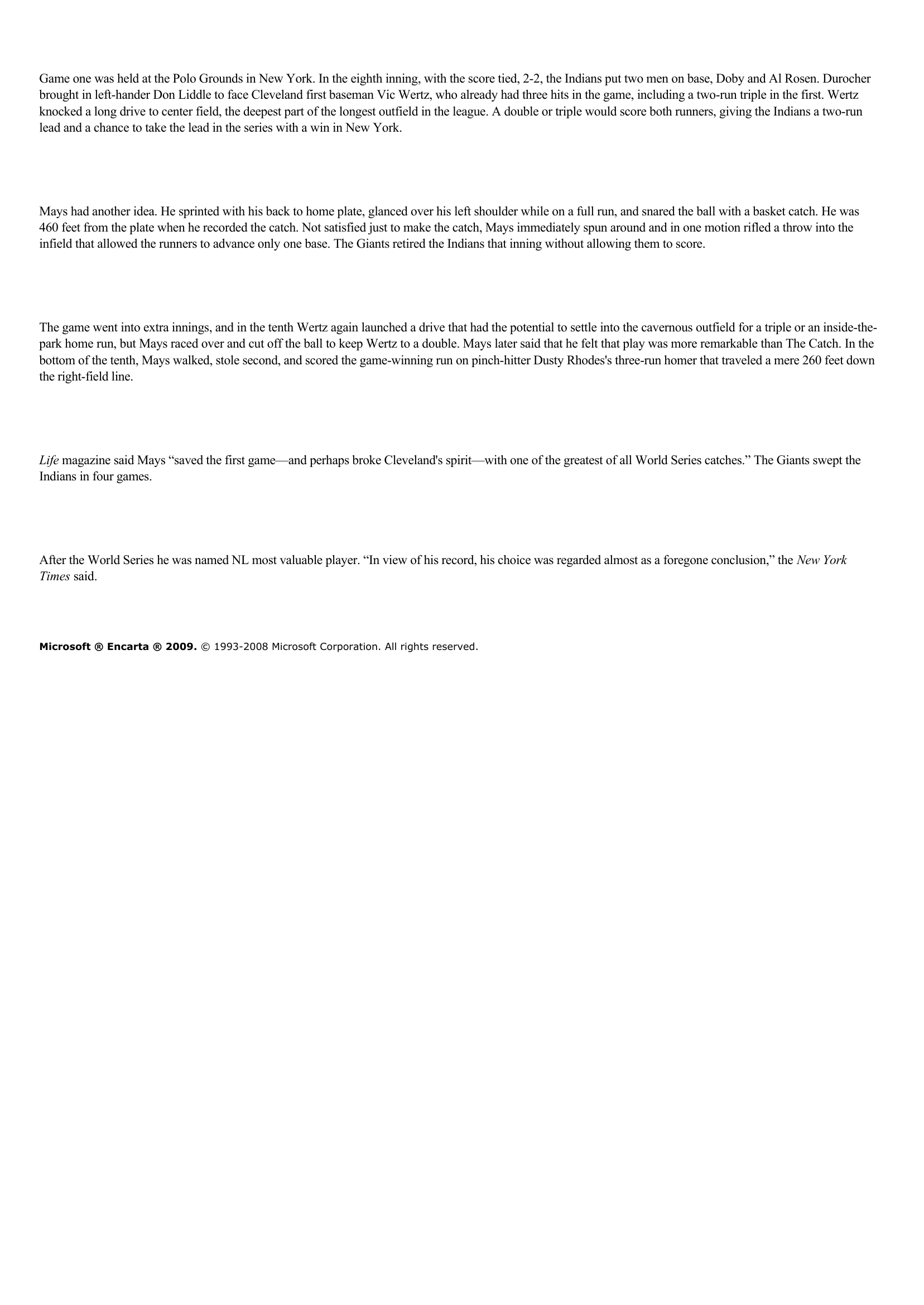Mays Makes "The Catch".
Publié le 14/05/2013

Extrait du document
«
Game one was held at the Polo Grounds in New York.
In the eighth inning, with the score tied, 2-2, the Indians put two men on base, Doby and Al Rosen.
Durocherbrought in left-hander Don Liddle to face Cleveland first baseman Vic Wertz, who already had three hits in the game, including a two-run triple in the first.
Wertzknocked a long drive to center field, the deepest part of the longest outfield in the league.
A double or triple would score both runners, giving the Indians a two-runlead and a chance to take the lead in the series with a win in New York.
Mays had another idea.
He sprinted with his back to home plate, glanced over his left shoulder while on a full run, and snared the ball with a basket catch.
He was460 feet from the plate when he recorded the catch.
Not satisfied just to make the catch, Mays immediately spun around and in one motion rifled a throw into theinfield that allowed the runners to advance only one base.
The Giants retired the Indians that inning without allowing them to score.
The game went into extra innings, and in the tenth Wertz again launched a drive that had the potential to settle into the cavernous outfield for a triple or an inside-the-park home run, but Mays raced over and cut off the ball to keep Wertz to a double.
Mays later said that he felt that play was more remarkable than The Catch.
In thebottom of the tenth, Mays walked, stole second, and scored the game-winning run on pinch-hitter Dusty Rhodes's three-run homer that traveled a mere 260 feet downthe right-field line.
Life magazine said Mays “saved the first game—and perhaps broke Cleveland's spirit—with one of the greatest of all World Series catches.” The Giants swept theIndians in four games.
After the World Series he was named NL most valuable player.
“In view of his record, his choice was regarded almost as a foregone conclusion,” the New York Times said.
Microsoft ® Encarta ® 2009. © 1993-2008 Microsoft Corporation.
All rights reserved..
»
↓↓↓ APERÇU DU DOCUMENT ↓↓↓
Liens utiles
- FOOTBALL a match two teams playing against each other in a 90-minute game of football a pitch the area where footballers play a match a referee the person who makes sure that the players follow the rules.
- exposé anglais introduction to the Consumer Society
- Le théâtre a-t-il pour fonction de tout dire, de tout expliquer au spectateur de la crise que vivent les personnages? - Par quels moyens et quelles fonctions Juste la Fin du monde est une pièce qui nous retrace la crise de cette famille?
- Ideology and Rationality in the History of the Life Sciences
- is the cultural difference a barrier between individuals.


